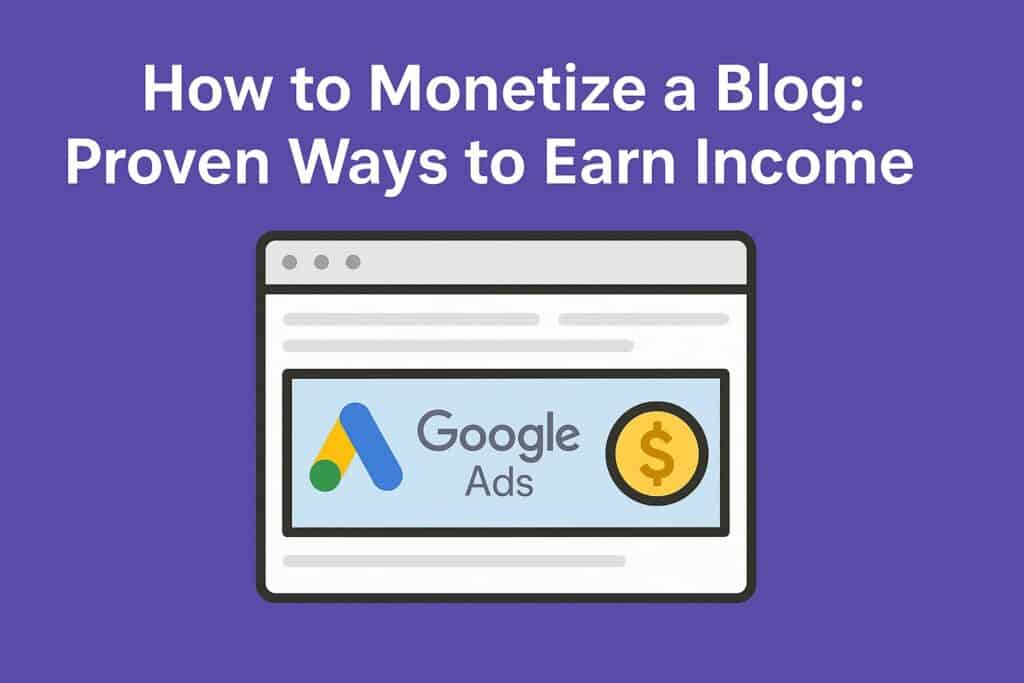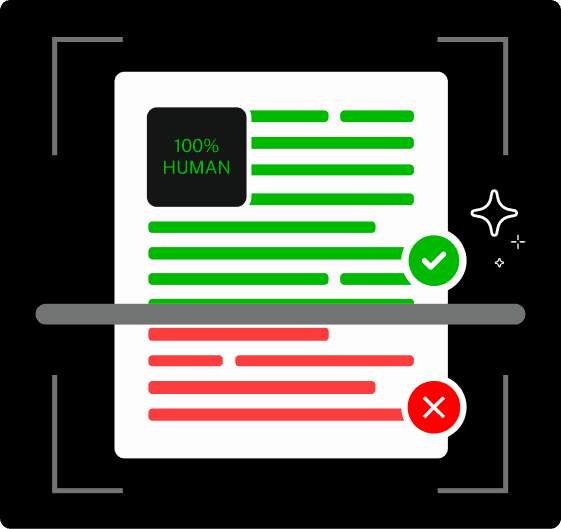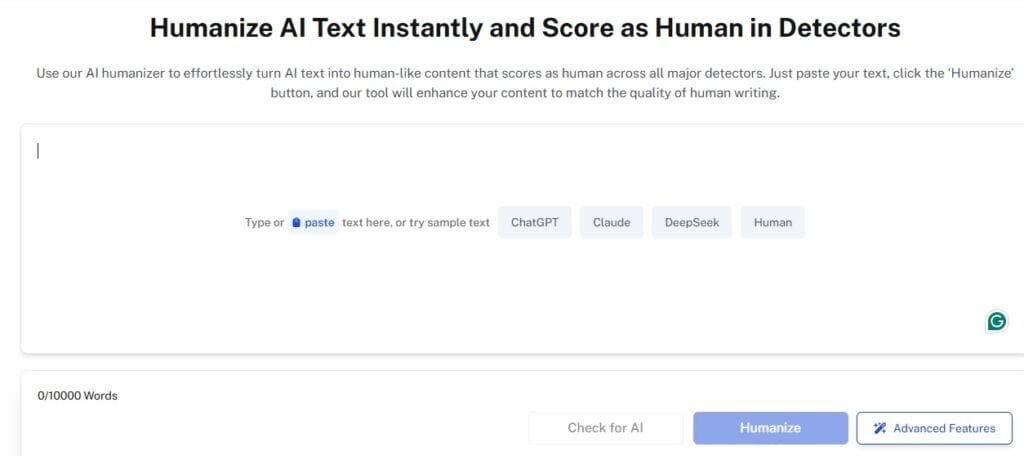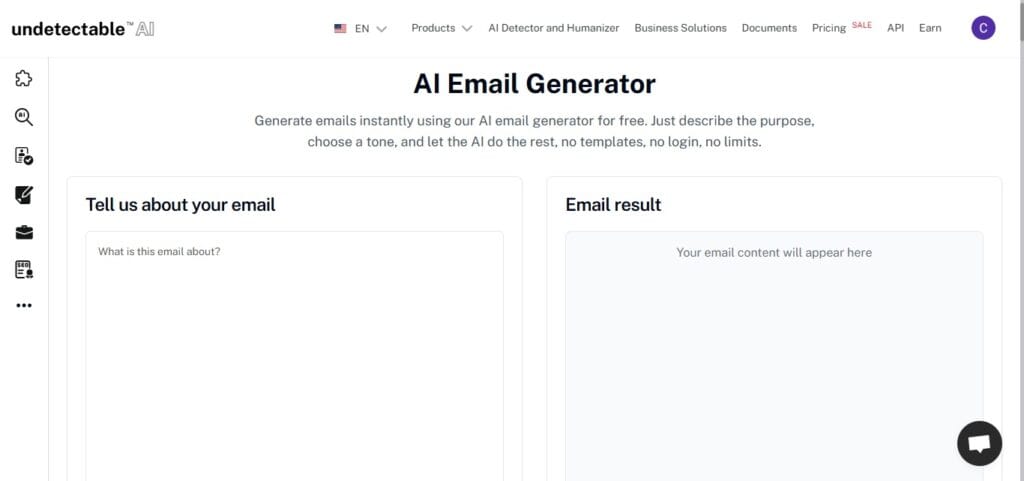If you’re a blogger who feels overwhelmed by the idea of monetization just because everyone in your niche seems to be crushing it, you’re definitely not alone.
It is far too easy to scroll through blogs and see them launching online courses and partnering with major brands, all while you feel like you’re too behind and will probably never catch up.
The truth is, every successful blog you see today started exactly where you are.
They had zero income and zero clarity on how to make money from their content.
Blog monetization isn’t reserved for a select few. It is very much possible to make a multi-million-dollar business out of your blog from the ground up. Tim Sykes, for example, reportedly brings in over $1 million per month through timothysykes.com.
In this article, I’ll explain exactly how to monetize a website or blog like Tim, and thousands of others, did.
A legfontosabb tudnivalók
- Blog monetization is the process of turning your content and audience into income streams.
- You can monetize a blog through multiple methods, including display advertising, affiliate marketing, sponsored content, digital products, memberships, freelancing, and physical merch
- Every blog monetization technique depends upon high-quality, valuable, and optimized content. Without that, no revenue model will hold!
- Once your blog is successfully monetized, you can license its content and even sell the blog entirely as a digital asset, much like real estate.
What Does Blog Monetization Mean?

Monetization just means making money out of your blog.
The visitors you have on your blog and the views they bring have potential monetary value if you design your blog to capture it.
Now, how long does it take to monetize a blog? At least 6 months.


Soha többé ne aggódj amiatt, hogy a mesterséges intelligencia felismeri a szövegeidet. Undetectable AI Segíthet:
- Tegye láthatóvá az AI-asszisztált írást ember-szerű.
- Bypass az összes főbb AI-érzékelő eszköz egyetlen kattintással.
- Használja a címet. AI biztonságosan és magabiztosan az iskolában és a munkahelyen.
Any form of monetization is rarely instant. Your blog posts have to mature, i.e., be present on your site for at least a few months before they can be monetized.
How to Monetize a Blog in 2025: Step-by-Step Guide
Let’s talk about the exact blueprint you will have to follow to make money from your blog.
- Step 1: Build a Strong Foundation First
Monetization only works when you’ve built a site worth paying attention to.
So, before you think about revenue streams, you will have to keep your dedicated focus on publishing helpful content that can sustain your income.
Anything less than a defined niche with consistent, good-guality content aimed at a clear audience is just noise on the internet.
Have a very narrow niche. Then write a series of SEO optimized and strategically structured posts in that niche.
Each post should target a specific keyword (ideally low in keyword difficulty), answer a specific question, and keep the reader engaged long enough to convert.
Build internal links between your blog posts.
Also, optimize your site speed and design to make users actually stay on your site.
Kimutathatatlan mesterséges intelligencia AI SEO író is a great tool for writing long-form SEO-optimized articles that establish you as an authority figure in your niche.
- Step 2: Set Up the Right Tools and Analytics

You can’t monetize what you can’t measure.
How do you know when to monetize a page on your blog? How will you determine if your audience is large enough to invest in making your merch?
These answers require data, which comes from analytics tools.
Here are the most important tools needed to set up your blog for monetization:
- Google Search Console to understand which pages on your site get more traffic and which ones are not performing well.
- Google Analytics 4 (GA4), the command center that tracks user behavior across devices. It also tracks your affiliate links and newsletter sign-ups.
- SEO and keyword research tools like Ahrefs, UberSuggest, SEMrush, vagy KeySearch, etc
- A lead capture system to convert your website readers into subscribers
- Step 3: Monetize Through Display Advertising
Display ads are the most accessible entry point into blog monetization.
The concept of making money out of ads is that you rent out portions of your website (banner spots, sidebar blocks, in-content placements) to advertisers who pay you per impression (CPM) or per click (CPC).
The value of those placements depends entirely on your niche and the kind of users you have.
Always start with Google AdSense to test the waters because it is beginner-friendly and easy to implement. But its returns are quite low, so you’ll eventually shift to premium ad networks.
Néhány ezek közül:
High traffic alone does not guarantee a high ad income.
For better returns, you need qualified traffic, which means your users should spend some time on your site, scroll, click, and engage with the content.
- Step 4: Affiliate Marketing
It is the process of recommending a product/service that’s not yours and earning a commission every time someone buys it through your link.
Examples of some affiliate programs are Amazon Associates, Shopify, FreshBooks, Impactstb.
No more than half of your content should be affiliate-driven.
The other half should be purely educational, problem-solving content that builds your credibility so that the reader trusts your product recommendations too.
All your affiliate recommendations must be relevant to your niche and backed by experience.
Never promote random products just because they pay high commissions.
A good affiliate post also answers every question a reader might have about the product before they make a purchase.
Also, your content itself should not sound pushy. Use Undetectable AI’s AI Humanizer to make it genuinely human so it does not sound like a sales copy.

- Step 5: Sell Digital Products
So far, we have discussed Ads and affiliates, both of which depend on third-party approval. Your own digital products give you more control and profit entirely in your hands.
Once created, a digital product can generate revenue around the clock passively.
Digital products that solve a customer’s problem sell out fast. It must be so specific and actionable that your readers feel stupid not to buy it.
As Alex Hormozi quoted Travis Jones in his book $100 offers:
“Make people an offer so good they would feel stupid saying no.”
An example of a digital product for a finance blog could be a “Debt-Free Budget Planner” template. Now, your blog posts can teach the reader how to create one for themselves, but a ready-made paid product will appeal to them too!
And you can strategically link multiple different blog posts on your website to a digital product landing page.
Though marketing your digital product requires the same discipline as content creation.
- Step 6: Offer Services or Freelancing
If you possess skills that solve a problem, such as writing, design, strategy, SEO, marketing, coaching, editing, web development, photography, you name it, your blog doubles up as your portfolio.
Your website, in that cas,e is proof of your work. For example, if you’re a writer, your content in itself tells the reader that you’re good at your job.
Make sure to have a dedicated offer to let your website visitors know exactly how they can hire you or what services you provide.
You can create a “Work With Me” page that lists your services, deliverables, pricing range, and social proof in terms of testimonials.
- Step 7: Sponsored Content and Brand Partnerships
If you have a defined niche and engaged readers, chances are, a lot of relevant brands would love to work with you.
For example, if you’re wondering how to monetize a food blog, you can easily collaborate with a cookware brand and produce articles featuring their products.
Just make sure that your sponsorships feel so native that readers barely realize they’re paid.
Of course, you will always disclose whenever you post paid content, but it should deliver genuine value to your readers too.
Brands get hundreds of sponsorship requests. When reaching out, write a concise, personalized pitch explaining why your blog is the right bridge to their customers.

Kimutathatatlan mesterséges intelligencia AI Email generátor will be a great help with that!
- Step 8: Memberships and Subscriptions
Memberships convert your audience into a close community, provided that your exclusive content is genuinely worth paying for.
Frankly, nobody would hand over their credit card just to “support the blog.” You must offer them something in return that they can’t get anywhere else.
Build your membership through Memberstack, Podia, Ghost, vagy Patreon, depending on your technical comfort and brand aesthetic. Keep the payment process limited to one or two pricing tiers.
Your membership offer should solve a recurring problem.
Sit down and think about what your audience needs help with every single month to create a subscription hook.
- Step 9: Sell Physical Products or Merch
Physical products bring tangible value. Just make sure the product genuinely reflects your blog’s personality and is useful. Otherwise, it’s just vanity inventory that gathers dust.
The biggest mistake bloggers make when launching merch is thinking they could do well with slapping their logo on a t-shirt.
Blog merchandise is successful due to only 2 reasons:
- It solves a genuine problem
- It amplifies a feeling of belonging due to a shared purpose
The easiest way to launch without the risk of loss is through print-on-demand (POD) services. Printful, és Gelato, for example, are services that handle product printing, fulfillment, and shipping after you give them your design and decide on the pricing.
Once you’ve validated consistent sales, you can move to custom manufacturing for higher profit margins.
- Step 10: Build Passive Income Streams
The first principle of true blog-based passive income is evergreen value.
The content you publish should stay relevant for months and years so it can attract traffic indefinitely through SEO.
It is very much possible that a guide you write in 2025 could still be driving affiliate commissions in 2028 if it solves a timeless problem.
Your blog should also lead visitors from free value to paid offers without you manually intervening.
Create a structured path for your blog, which includes:
- An email opt-in offering a free resource (like a checklist or toolkit)
- An automated email sequence to nurture your readers and introduce your paid products
And any blog post that performs well, repurpose it into a more detailed eBook or an online course.
Once published, it will require almost no ongoing maintenance but will continue to generate steady income as long as you drive traffic to it.
Advanced Monetization Strategies

If you produce original, research-based guides, companies may be willing to pay for the rights to use and redistribute that information.
So, license your content into intellectual property assets to keep its ownership but monetize its access.
Many businesses need content for their services, but they don’t have the right expertise to produce it.
You can license your content library for rebranding, i.e., allow a company to use your posts under their own name for a fee.
One strong white-label deal can earn you thousands of dollars.
If you’ve built a successful digital course that sells via individual subscriptions, you could license its model too.
Let other bloggers in adjacent niches use your template under their own brand while paying you royalties.
Flipping your blog, i.e., selling it entirely, will get you a huge sum at once. Once your blog becomes a profitable, self-sustaining business, you can sell it like real estate.
Use your knowledge and expertise to grow multiple niche sites in parallel and sell them for 20-40x monthly profit.
Common Mistakes to Avoid When Monetizing
A lot of creators sabotage themselves when it comes to monetizing a blog. The excitement to “start earning” can lead many towards shortcuts that hurt you in the long run.
Here are some mistakes to avoid if you want to build a profitable, credible blog:
- Many bloggers start adding ads and affiliate links before they’ve built a loyal audience. You must realize that monetization is the reward for authority, not a substitute for it.
- A site overloaded with display ad pop-ups and auto-playing banners makes your page look cluttered. It also ruins the reader’s experience. Don’t do that!
- Do not just rely on one income stream because an algorithm change, which is very frequent with Google, can risk your profits. Diversify into multiple sources so one setback doesn’t cripple your earnings.
- A monetized blog is never “done.” Make sure you audit your content quarterly to review every page and refresh outdated content.
- Never fall for the trap of stuffing your blog with keyword-heavy affiliate posts. Use Undetectable AI’s AI SEO író to produce high-quality, SEO-optimized content that educates the reader rather than coming off as a sales pitch.
Before monetizing or publishing your content, run it through our AI Checker to verify whether any part of it was AI-generated.
It ensures your blog posts remain authentic, original, and fully compliant with platform and partner guidelines.
See what our AI Detector and Humanizer can do—try our widget below!
Következtetés
At the end of the day, the real value behind your blog comes from your content alone.
If you focus on creating genuinely helpful, well-optimized content, monetization becomes far less complicated. It happens naturally because value always attracts opportunity.
And if you want help creating that kind of content at scale, you won’t regret checking out the Undetectable AI toolkit.
Használja a AI Chat for brainstorming original topic ideas and AI SEO Writer to convert them into ready-to-publish pieces.
Regisztráljon a Kimutathatatlan AI ma!
